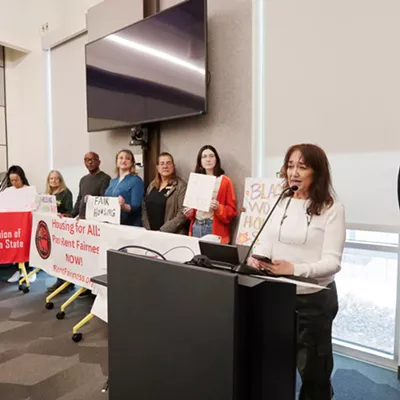The study grouped Spokane elementary schools by the percentage of kids who qualify for free and reduced lunch. In schools where more than 75 percent of kids qualified, 19.3 percent were obese. In schools where less than half qualified for free and reduced lunch, only 9 percent were obese, according to the study.
"That's a shocking gap and it's really discouraging," says Pablo Monsivais, an associate professor at the WSU Elson S. Floyd College of Medicine and one of the researchers on the study.
On the positive side, in the 28 elementary schools in the study, the rate of obesity was 15.5 percent. That's 3 percent lower than the national childhood obesity rate of 18.5 percent.
Still, the study adds to existing research that says socioeconomic factors are linked with obesity both in children and adults. And it's the first look at how social and built environments in Spokane impact obesity rates.
"Our study is basically like a first step in revealing not only the big health inequities within elementary schools, but also revealing the environmental inequities within elementary schools," Monsivais says.
The median property value for homes nearby the schools with the highest free and reduced lunch rates was $106,517, according to the study. That's half the median residential property value than schools with less than half of students on free and reduced lunch.
The study, published in Journal of Community Health, did not delve into exactly why poorer schools had higher obesity rates. But it does document that near poorer schools, the crime rate is higher and there are more nearby arterials with heavy traffic.
Those factors can be detrimental for kids looking to maintain healthy habits, Monsivais says. If a child lives close to a busy street, or there are higher crime rates, parents may be more reluctant to let them out to go play. Monsivais says studies like this should help communities rethink things like the way homes, workplaces and schools are engineered.
"People often blame individuals [for obesity], but it's a symptom of a systemic problem in our society," he says.





















